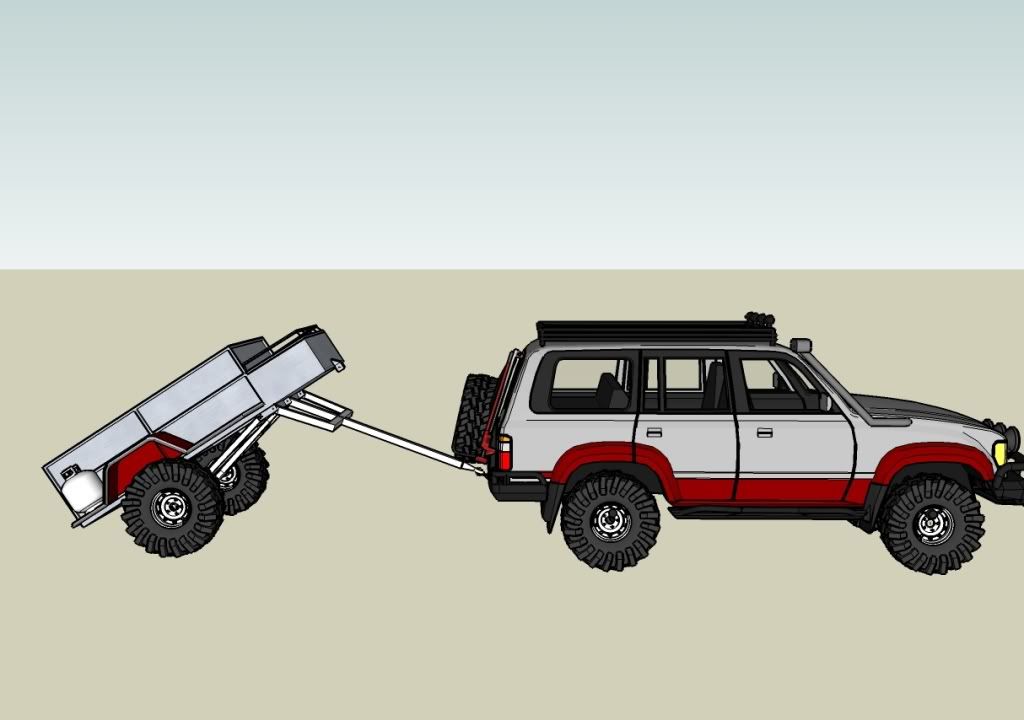indiedog
Adventurer
Couldn't you fix the base of a thread/scissor type wind up jack, or the base of a high-lift jack to the drawbar and then fix the moving section via a pivot to the box? It would need to be fixed both ends to keep the box in position relative to the drawbar.
Do high-lifts resist upwards movement?
The other thing I've seen here is an airbag used as a car jack utilizing the exhaust as the pump. If you could fit an airbag between the box and drawbar this could be a pretty low tech solution. Again you need to stop the box lifting off the bag.
Do high-lifts resist upwards movement?
The other thing I've seen here is an airbag used as a car jack utilizing the exhaust as the pump. If you could fit an airbag between the box and drawbar this could be a pretty low tech solution. Again you need to stop the box lifting off the bag.

